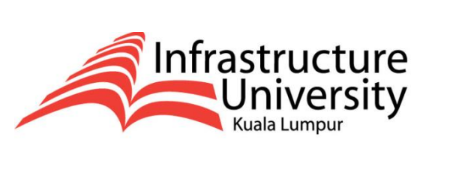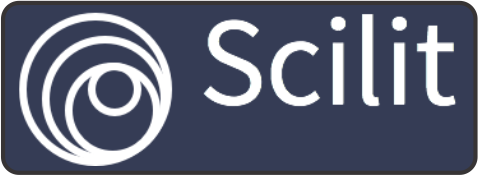Maqasid Sharia Analysis of The Welfare Level of Muslim’s Ceramic Craft in Plered Purwakarta
DOI:
https://doi.org/10.21154/joie.v3i1.6271Keywords:
welfare, muslim ceramic craftsmen, maqasid shariaAbstract
Introduction: The activity of making ceramics is a work that has been passed down from generation to generation from the ancestors of the Plered people until now. Amid its existence, the number of craftsmen in 2019 decreased to 163 from the previous number of 205 craftsmen. This study aims to determine Muslim ceramic craftsmen’s welfare level in the review maqaá¹£hid syari'ah in Plered District, Purwakarta Regency. Research Methods: Research data sources are primary and secondary data. A sample of 114 craftsmen was obtained through the Simple Random Sampling technique. Data collection techniques are observation, documentation, and questionnaires. The analysis technique used is a quantitative descriptive analysis technique with a percentage formula through a Likert scale assessment tool. Results: The results of this study indicate that overall Muslim ceramics craftsmen who are classified as high welfare criteria are 38 people (33.3%), 74 people (64.9%) are at the moderate welfare level, 2 people (1.8%) are classified as low welfare level, and there are no craftsmen with very low or very high welfare criteria. The determinants of the level of welfare of Muslim ceramic craftsmen are through hifdzu din, hifdzu nafs, hifdzu 'aql, hifdzu nasl, and hifdzu maal. In this case, the indicator of asset maintenance (hifdzu maal) the majority of craftsmen belong to the highest welfare criteria compared to other indicators, which is 95 people (83.3%).
References
Afif, M., Nugraha, A. L., Soenjoto, A. R., Setiyono, A., & Suryanto, S. (2019, October). Waste Management And Education Model In The Margosaras Waste Bank; An Islamic Development Perspective. In ICBLP 2019: Proceedings of the 1st International Conference on Business, Law And Pedagogy, ICBLP 2019, 13-15 February 2019, Sidoarjo, Indonesia (p. 234). European Alliance for Innovation.
Al-Ghazali, Imam. (2020). Al-Mursyid Al-Amin Ila Mau’izhah Al-Mu’minin Min Ihya’ ’Ulum Ad-Din. Bandung: Marja.
Auda, J. (2022). Maqasid al-Shari'ah as Philosophy of Islamic Law. International Institute of Islamic Thought (IIIT).
Al-Zuhayli, W. (1997). Al-Fiqh al-Islami wa-Adillatuh. Beirut: Dar al-Fikr.
Big Indonesian Dictionary. (2019). https://kbbi.web.id.
Hardiati, N. (2021). Rasulullah's Business Ethics as a succesful business actor in the Maqosid Syariah Perspective. Jurnal Ilmiah Ekonomi Islam, 7(1), 513-518.
Enggardini, Rohma Vihana. (2017). Employee Welfare Maqasid Syari’ah Perspective at the Coffee and Cocoa Research Center. Journal of Theory and Applied Sharia Economics Vol. 4 (8), 315-340.
Fauzia, Ika Yunia, and Abdul Kadir Riyadi. (2018). Basic Principles of Islamic Economics Maqashid Syari’ah Perspective. 3rd ed. Jakarta: Prenadamedi.
Rosadi, H. (2018). Preded Ceramics, Purwakarta, West Java Your History Now. Dimensi Vol. 14 (2), 113-130.
Hulaimi, A., Sahri, S., Huzaini, M. (2016). Islamic Business Ethics for Cattle Traders and Their Impact on the Welfare of Traders in Masbagik District, East Lombok Regency.” Iqtishadia, 3(2), 344-364.
Imani, S. (2019). Analysis of MaqÄshid As-SyarÄ«’ah Welfare in Micro, Small and Medium Enterprises. Al-Masraf: Journal of Financial and Banking Institutions, 4(1), 55-64.
Ismanto. (2016). Maqashid Asy-Syari’ah Perspective Insurance. Yogyakarta: Student Libraries IKAPI Members.
Jauhar, Ahmad Al-Mursi Husain (2018). MaqÄshid As-SyarÄ«’ah. 5th ed. Jakarta: Amzah.
Karim, Adiwarman (2016). History of Islamic Economic Thought. 3rd, Jakarta: PT Raja Grafindo Persada.
Khatib, S. (2018). The Concept of Maqashid Syari’ah: A Comparison Between Al-Ghazali’s Thoughts and That of Al-Syatibi. Mizani: Legal, Economic and Religious Discourse, 5(1), 47-62.
Maftuchan. (2016). Welfare Transformation to Fulfill Economic Rights and Universal Health. Jakarta: LP3ES.
Minister of State for Cooperatives and SMEs of the Republic of Indonesia. (2010), Blue Print One Village One Product. Retrieved from. http://www.kemenperin.go.id.
Mugroho, Abdul Ghofar Adi. (2017). The Enchantment of the Beauty of the Plered Ceramics Center Tourism Object in Purwakarta, West Java. Retrieved from . https://ihategreenjello.com/pesona-keindahan-obyek-wisata-sentra/.
Nafik, Muhammad, and Muhammad Qudsy. (2016). Development of Islamic Business Social Function Models Based on MaqÄshid As-SyarÄ«’ah in Sharia Bank X. Business Review, 16(1), 71-75.
Nurhasanudin, Dede. (2019). Defend Ceramic Pottery, Director General of IKM Appreciates Purwakarta Regency Government. Retrieved from https://www.ayobandung.com.pottery-ceramic-dirjen-ikm-appreciation-pemkab-purwakarta.
Public Relations of the Ministry of Industry and Industry. (2019). Exports Translucent USD 25 Million, IKM Pottery and Decorative Ceramics Still Prospective. Retrieved from https://kemenperin.go.id/article/20565/Export-Translucent-USD-25-Million,-IKM-Pottery-and-Decorative-Ceramics-Still-Prospective.
Puspasari, Martini Dwi. (2015). The Concept of Welfare in Islamic Economics (Maqashid Syari’ah Perspective). Islamic Economics Journal, 1(1). 45-56.
Rahmawati, L. (2012). Al-Ghazali’s Economic Concept. Maaliyah: Journal of Business islam, 2(1), 75-85.
Indonesia, K. P. R. (2019). Laporan Kinerja Kementerian Perindustrian. Biro Perencanaan.
Karim, A. A. (2021). Ekonomi Mikro Islami. Rajawali pers.
KBBI. (2022). Kamus Besar Bahasa Indonesia.
Nurhasanudin, D. (2019). Jabang Tutuka Layanan Darurat di Purwakarta.
Wibowo, S., Rusmana, O., & Zuhelfa, Z. (2017). Pengembangan Ekonomi Melalui Sektor Pariwisata Tourism. Jurnal Kepariwisataan: Destinasi, Hospitalitas Dan Perjalanan, 1(2), 93”“99.
Report of the Regent of Purwakarta. (2017). Data on Potential Objects and Tourist Attractions (ODTW) in Purwakarta Regency. Department of Youth and Sport Tourism and Culture. Retrieved from. https://jdih.purwakartakab.go.id.
Rosni, R. (2017). Analysis of the Level of Welfare of the Fisherman Community in Dahari Selebar Village, Talawi District, Batubara Regency. Journal of Geography 9(1), 53-66.
Sahroni, Oni, and Adiwarman Karim. (2017). Maqashid Business and Islamic Finance Synthesis of Jurisprudence and Economics. 3rd ed. Depok: PT Raja Grafindo Persada.
Sardar, Z.,& Muhammad, N. (2016). Welfare in an Islamic Perspective on Employees of Islamic Banks. Journal of Islamic Economics Theory and Applied, 3(5), 315-440.
Sarif, A.& Ahmad, R. (2017).The Concept of Maslahat and Mafsadah According to Imam Al-Ghazali.Tsaqafah: Journal of Islamic Civilization, 13(2), 353-368.
Soetomo, Khatib. (2014). Welfare and Efforts to Realize It in the Perspective of Local Communities. Yogyakarta: Student Libraries (IKAPI Members).
Syamsuri. (2018). Islamic Development Economics. Ponorogo: UNIDA Gontor Press.
Warson, Ahmad. (2000) Al-Munawwir Dictionary. Yogyakarta: PT Krapyak.
Wibowo, Sukarno, and Dedi Supriadi. (2017). Islamic Microeconomics. Bandung: CV. Pustaka Setia.
Widagdo, Rohiman Noto. (2016). Introduction to Social Welfare with an Insight of Faith and Piety. Jakarta: Amzah.



















